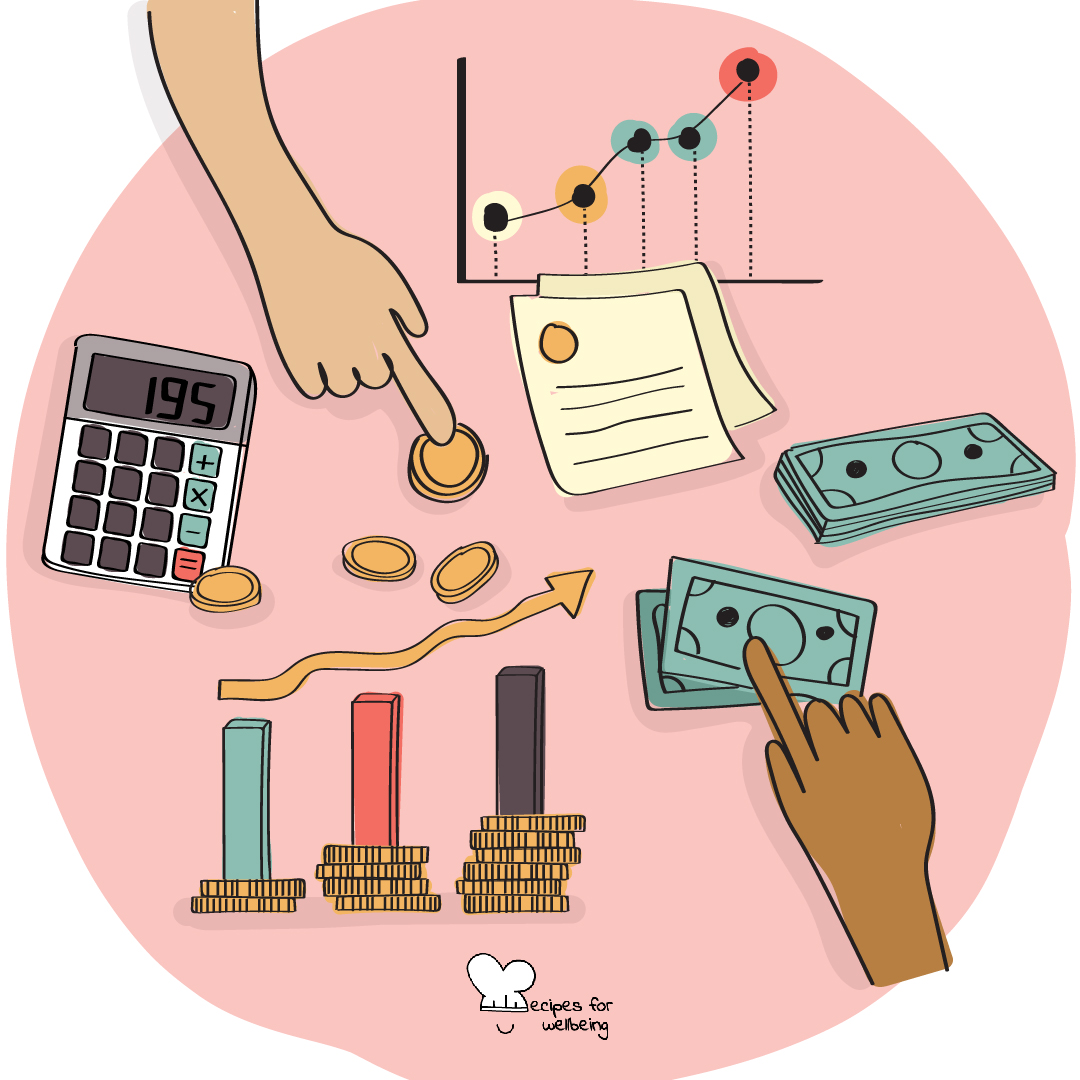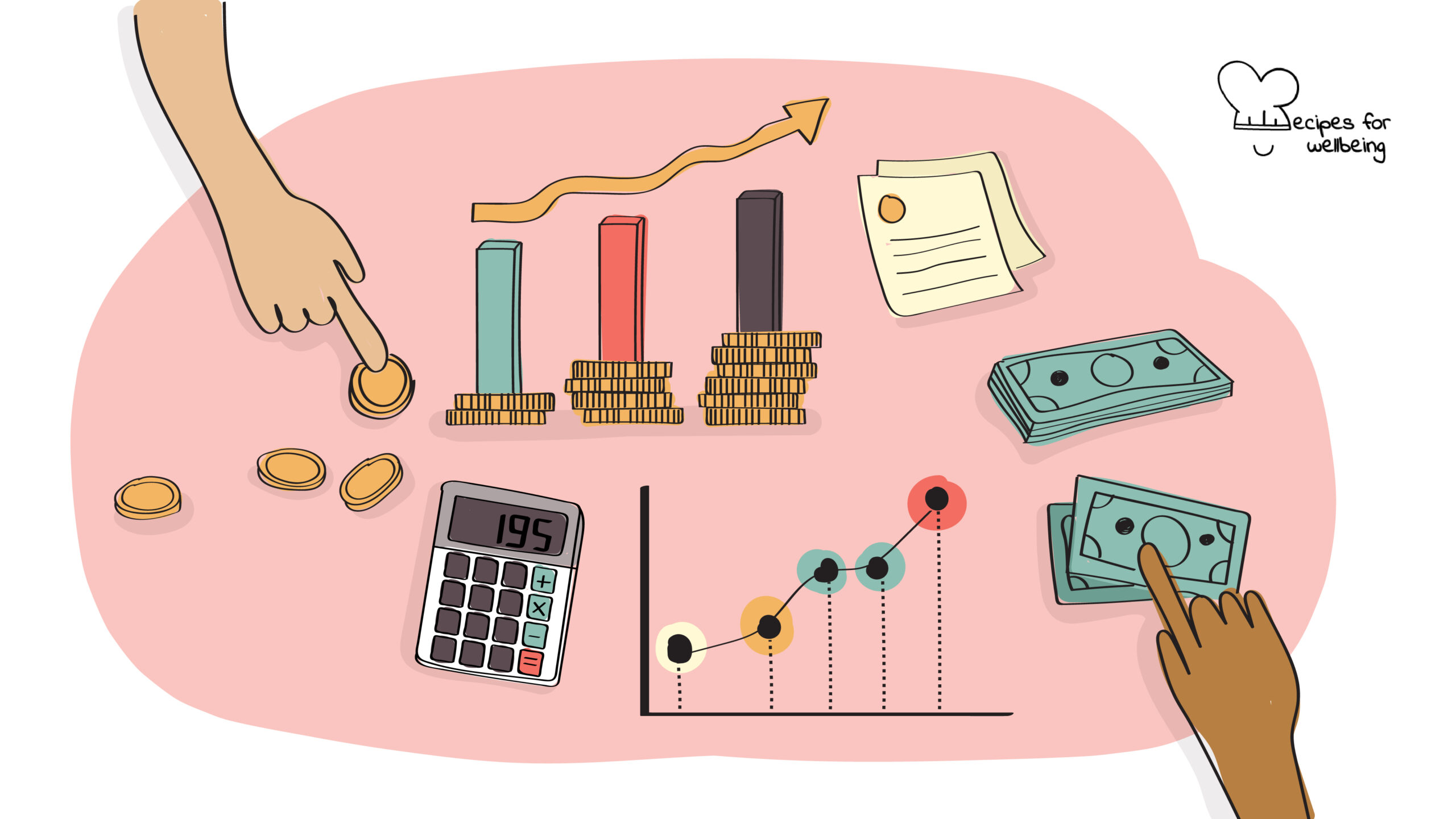
Economic democracy
These ruins are to the future what the past is to us. ―Carolyn Forché
👥 Serves: 26-40 people, 41+ people
🎚 Difficulty: Hard
⏳ Total time: 1 day
🥣 Ingredients: Your community, willingness, desire to change
🤓 Wholebeing Domains: Accomplishments, Community
💪 Wholebeing Skills: Accountability, Ambition, Community-building, Determination, Equity, Legacy, Non-extracting, Reciprocity

Economic democracy
📝 Description
Develop economic democracy in your community.
Different nations around the globe follow different economic systems to run their country. The dominant economic systems of the modern era are capitalism and socialism, each with distinguishing features.
- Capitalism relies heavily on a “free-market” economy whereby private actors own and control the factors of production and the law of supply and demand regulates production, labour, and the marketplace. The government does not have tight control of the economy and competition is the main driver behind innovation and economic growth. Criticisms of capitalism include its inability to promote equal opportunity for citizens and “wage labour”, which values humans for their ability to contribute to the workforce, which they can sell as a commodity. Examples of capitalist nations include Singapore, New Zealand, Taiwan, and the United States.
- Socialism, in more terms, is a political and economic market where property and production are typically controlled and owned by the state or the government. The idea of socialism is that wealth will be spread evenly amongst citizens and that people will be treated equally and fairly. Criticism of socialism is of slow economic growth, less entrepreneurial opportunity, and market competition due to a lack of motivation by citizens. Examples of socialist nations include China, Cuba and Vietnam.
David Schweickart proposes an alternative model: economic democracy. Economic democracy relies on citizens having shared ownership of resources in their community and equal contribution in decision making. The focus is not on self-preservation and self-interest but togetherness, cooperation, democracy, support, and sustainability. It allows everyone to prosper and succeed, rather than a lucky few.
This recipe has been adapted from the work of David Schweickart, an American mathematician and philosopher, by our wellbeing content writer collaborator Marissa Del Mistro.
👣 Steps
Step 1 – Understand economic democracy (2 hours)
As economic democracy is all about community building, why not get together with your community to learn about the model and its potential benefits for your community? The goal of the session is to walk away with an enriched understanding of the model.
How your community decides to improve your knowledge is up to you. You can start with mediums like videos, such as this one, or this one! This is also a great resource and course toolkit all about the topic. You can also wish to invite experts on the topic via Zoom or in person such as Lebran Sims.
Essentially, economic democracy strives to take the power of economics from limited wealthy individuals and harvest and distribute it to everyone. Economic democracy shifts from domination to shared authority. Some examples are co-owners of housing, worker-owners at work instead of “boss and worker”, and co-governance instead of “leader and follower”.
Naturally, for this system to work, it needs to be developed amongst like-minded people, who are keen and passionate about sustainable, long term change.
Step 2 – Agreeon core values and set priorities (2 hours)
Working closely with your community, you will work to develop your core values and what priorities you want to focus on. Core values may be improving a housing crisis and increasing ownership, shared decision making, improving environmental impact, increasing jobs for young people, and improving the education system and health care.
This meeting should be set up as a collaborative session. Oftentimes this works well with someone taking notes on a white board (or something similar) and people sharing topics that are close to their hearts and needs. This can then be narrowed down to, perhaps 2-3 main ideas and discussed in depth. What will this look like? Who will it support? Who should be involved?
Step 3 – Develop project ideas (2 hours)
At this point, you will want to develop teams or groups that have specific skills to work on varied projects, depending on what the idea determined in step 2 is. These groups will always work together with the wider community so that feedback and cooperation are happening.
It is important to note that economic democracy does not just mean developing and creating new programmes and “input” and participation for the sake of it. Rather, it means real partnership with shared power, control, and benefit for everyday people.
If you need some inspiration on tangible examples of economic development projects, here are a few:
- Co-operative grocery stores. The owners of the stores are the workers themselves! These people work closely with local farms, supporting and helping them obtain further ownership in their food enterprises. Co-ops have been found to have great growth and success, in the US, Uruguay, France, the UK, Italy, Spain, Denmark, and Sweden.
- Community-owned shopping malls. The owners of the malls are the community members themselves, which allows for living-wage jobs and more services than just shops, such as restaurants, fitness centres, entertainment etc. (depending on what the community wants!).
- Promotion of locally owned businesses
- Public banks. These banks are not dependent on making money and can therefore invest in “unprofitable” activities such as investing in improving public transportation, creating new art spaces, etc. They can also invest in small businesses and co-ops that wish to expand.
- Participatory budgeting. In a nutshell, it consists of citizens deciding together how to spend public money. This method was first introduced in Porto Alegre, Brazil in 1989, where the government gives a certain amount of money each year for citizens to make decisions on where it should be distributed and allocated. The process is dominantly led by poor and working class people, people who were considered marginalised segments of society. The projects range from improving drainage systems and street paving to complex housing projects.
Step 4 – Release project and organisational plan (1 hour)
The fun part! Once a project plan has been created and planned, you can inform the community about the plan, time scale, and benefits for everyone. This will need to be regularly evaluated over time to ensure its success.
Ultimately, an economic democracy should include all the same benefits and efficacy of the current market system, without the bad parts. If well established, it would allow for greater freedom for everyone in the community, greater equality, and increased political action.

